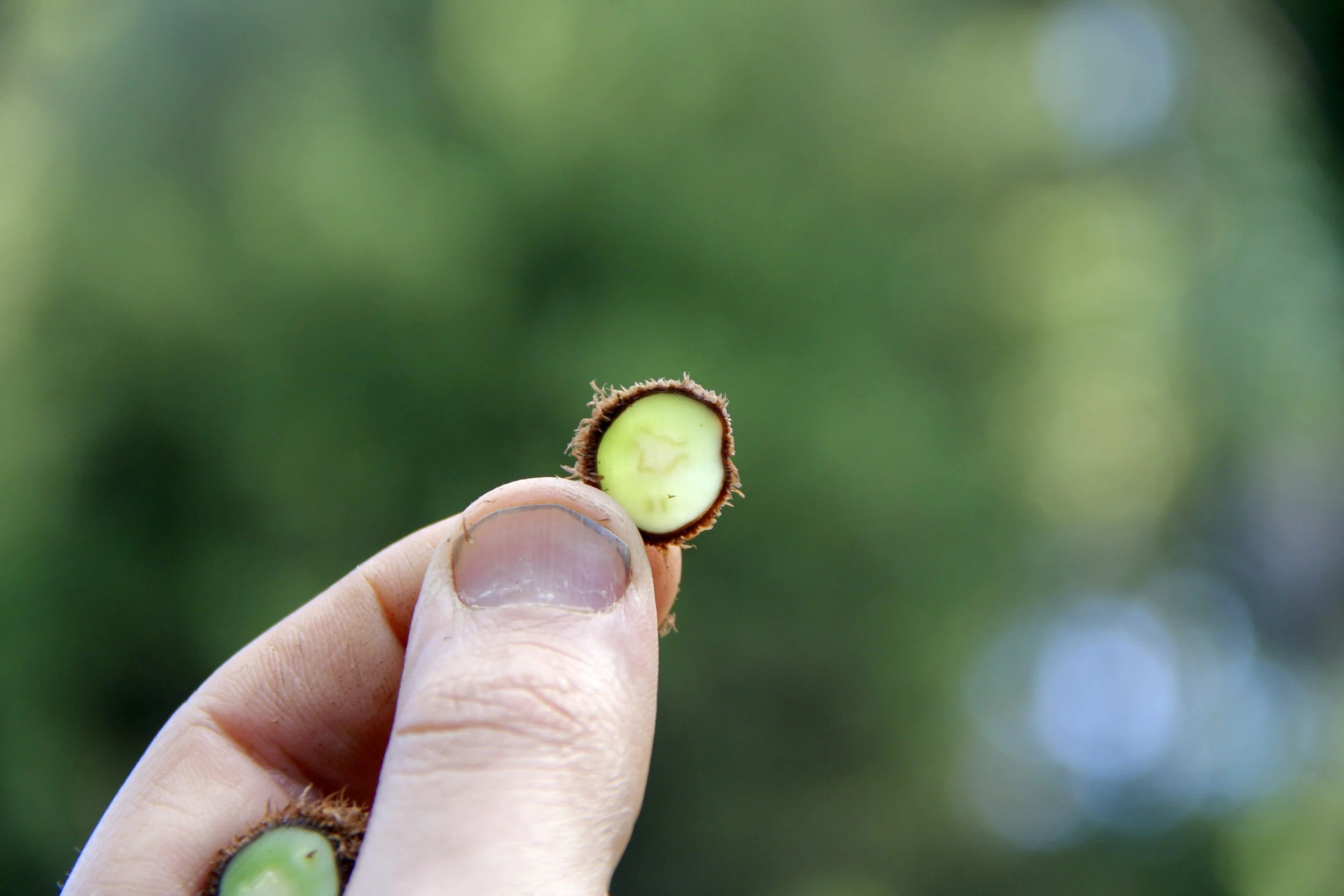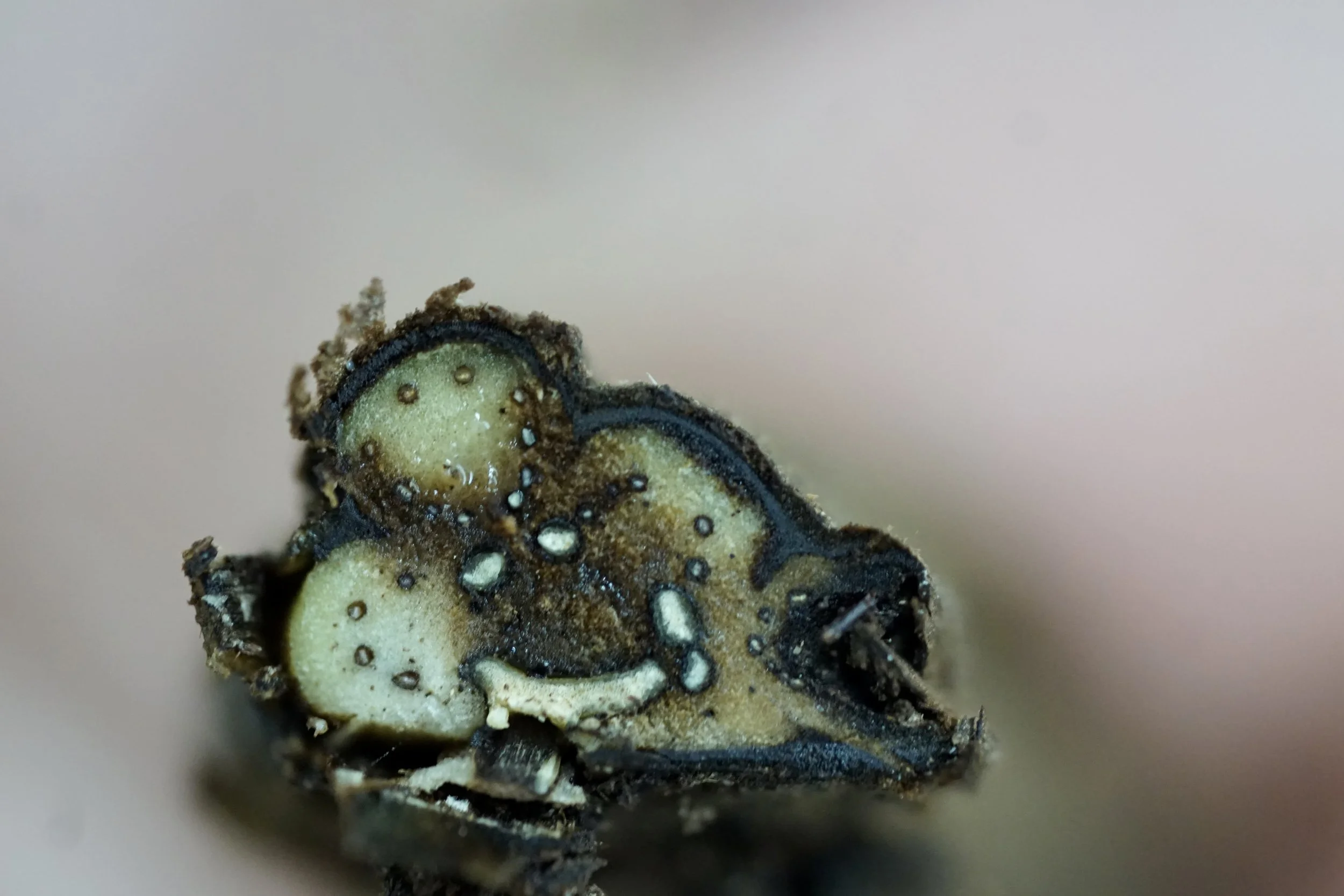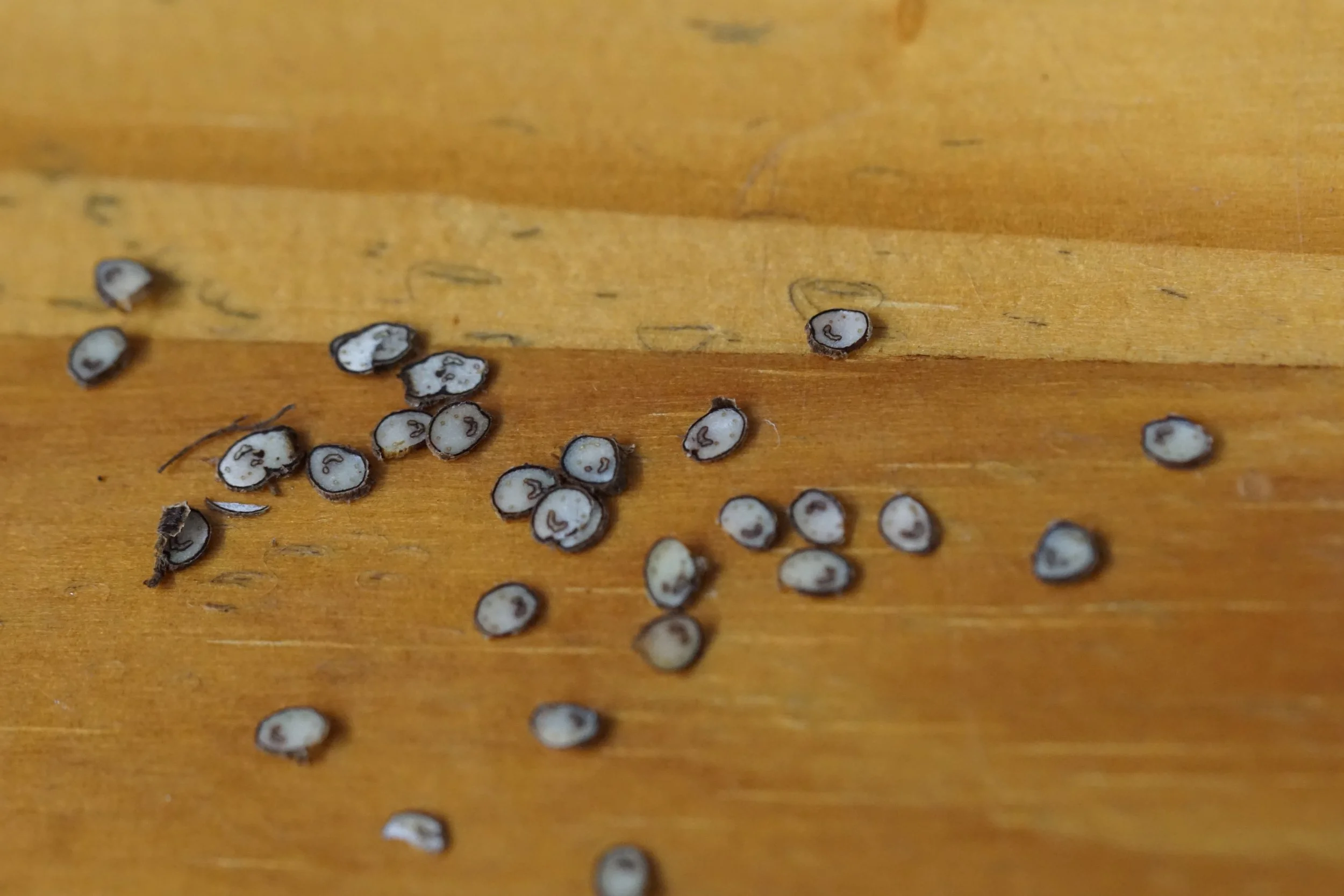Constraints, cross sections, and the limits of evolution
The 19th century French naturalist Georges Cuvier is lauded as the father of paleontology. Like many in the pre-Darwinian generation, he was a creationist. His argument against evolution, however, was not exclusively based on faith, but on the integration of an organism.
Cuvier’s theory on the “correlation of parts” was used to explain how a single tooth or other bone could be used to reconstruct an entire organism. This was possible, he argued, because each part of the organism was linked to every other part.
He used this principle to make a larger claim: if organisms are truly integrated wholes, not merely sums of individual parts, how could evolution fashion specific pieces? Changes in one part of the organism would necessitate changes in others; thus, small adaptive modifications would require a wholesale restructuring of all other parts, which may be insurmountable. The evolutionary biologist Stephen Jay Gould was sort of a fanatic of Cuvier, featuring him in dozens of his writings. Gould was also a champion of scientific pariahs, often elevating their work. He suggested that Cuvier’s argument was “the most important, and probably most intelligent, argument ever raised against evolution.” If individual parts of an organism are all fully integrated, selection on particular traits could not proceed.
However, Cuvier’s argument—as good as it may have been—was built on faulty logic. Every single part of an organism is not fully integrated. Some parts can, indeed, evolve at different rates and under different selection pressures. While this has been known for some time (even Darwin discussed this process), the idea was solidified in the 1970s as the concept of “quasi-independence” by the evolutionary biologist Richard Lewontin.
Fast forward, and the pendulum may have swung too far away from Cuvier’s position. By the mid-1980s reductionism was in full swing and organisms were being dissected into individually evolving parts, which natural selection has shaped. This idea still remains popular. It is borne out in introductory biology classrooms with students inquiring about the function of each individual part of an organism. This does not go away easily, but bleeds into our research programs and our thinking that individual parts of an organism have all been fashioned by natural selection. Indeed, this reductionist and adaptationist view of the organism was criticized in the famous “spandrels” paper by Gould and Lewontin in 1979. In this work, Gould and Lewontin do something surprising, they use Cuvier’s argument in a new way, articulating that while lineages evolve, not all parts of an organism can change independently, some are tethered to others.
It is worth quoting a section of their abstract in whole to show the similarity in argument to Cuvier. “[O]rganisms must be analysed as integrated wholes, with Baupläne [body plans] so constrained by phyletic heritage, pathways of development and general architecture that the constraints themselves become more interesting and more important in delimiting pathways of change than the selective force that may mediate change when it occurs.”
So, perhaps Cuvier was not entirely wrong. Some parts of an organism are, indeed, tethered to other traits. This is born out in more recent research, for instance, in primates the base of the skull and shoulder bones are highly covariate and cannot change independently. In recent decades, this type of covariation between traits has been called developmental constraint and it is usually used to explain the limitations of trait space, and why certain forms in nature are not observed.
In a scientific article I published this past month I also (unknowingly at the time) used Cuvier’s logic. Instead of arguing for creationism though, I argued that integration between structures of an organism is not merely a limiter of variation, but can also be a generator of new morphological form. As is the case with most of my work, this started with a simple natural history observation of ferns and their vasculature.
Stem cross section of a rhizome of Adiantum in Costa Rica. Note the vascular bundles in the central region. Note the radial arrangement of bundles in the stem relate with the spiral arrangement of leaves.
I have been fascinated with the patterning of plant vasculature since 2016, just after finishing my undergraduate degree. The winter after I graduated, I was fortunate enough to enroll in the Tropical Fern and Lycophyte course in Costa Rica with the Organization of Tropical Studies. The course was led by Robbin Moran (the former fern curator at the New York Botanical Garden). Robbin taught us that the first thing to do when identifying a fern is to cut the base of the petiole (the structure holding up the leaf) and look at the arrangement of vascular tissues. If the petiole has one vascular bundle you can eliminate nearly 80% of all fern species; if it has either two or multiple, you can then narrow down to two major groups. This is an extremely powerful and consistent heuristic for identifying species, and it fascinated me. I carried this fascination into graduate school where I studied the function and evolution of the fern vascular system.
Contrary to my initial hypotheses, and my desire for a form-function relationship, the arrangement of vascular bundles in the stem did not seem to correlate with hydraulics or drought tolerance. This may sound counterintuitive, but it turns out that the hydraulics of ferns relate more with the actual size and shape of the water conducting cells themselves. This is analogous to looking at road maps to understand traffic patterns. Imagine that the patterning of roads on a map (vascular architecture) may be less important for determining traffic patterns than the finer scale number and size of lanes (water conducting cell size and number). This observation then set me on a route to uncover exactly what governed the diversity of vascular architectures in fern stems.
This past January 2025 I went back to Costa Rica to teach the Tropical Fern Biodiversity course. I led a class research project on a species of fern called Mickelia nicotianifolia (tobacco fern), which has a long creeping stem that climbs up tree trunks. While the students were generating data for their part of the project, I started to cut up the fern stem. I noticed that the leaves of this fern are always produced on the dorsal or upper side of the stem. I also noticed that the vascular patterning in the stem looks like a smiley face, with an elongated lower bundle and several separated bundles at the top, associated with the placement of leaves. I wondered if the arrangement of leaves around the stem, not hydraulic stress directly, may be the determinant of vascular patterning. So, I went out to generate data that could bear on this question.
Cross section of the rhizome of Mickelia nicotianifolia, showing the smiley face patterning of the vascular tissues. Each gap in the central system is seemingly associated with the production of a leaf (the vascular traces moving off in the edges). Note the dorsiventral arrangement of bundles in the stem.
The arrangement of vascular bundles in ferns varies quite a bit. One aspect of the variation is the number and arrangement of vascular bundles in the stem. Some plants have 3, 5, 8, or many more vascular bundles scattered throughout. The symmetry of these bundles can also vary. Some are arranged symmetrically in the stem (radial), while others like the tobacco fern have bundles arranged in an almost whimsical smiley face pattern with an elongated ventral bundle (dorsiventral). For 27 fern genera representing around 30% of fern species richness, I quantified this variation in vascular patterning to see if there was a correlation between vascular bundle number and arrangement in the stem.
I found a striking correlation between the number of ranks of leaves along the stem and the number of vascular bundles within the stem. This relationship was almost 1 to 1 in some cases. For instance, if there were three rows of leaves along the stem, there were three vascular bundles in the stem. What's more is that the arrangement of leaves determines the spatial arrangement of bundles. For instance, if the leaves were arranged spirally, the vascular bundles were also arranged in a radial pattern. If the leaves were shifted to the dorsal side of the stem, the smiley face pattern emerged. Based on our understanding of plant development, there is a directionality here, particularly that the placement of leaves determines the arrangement of bundles, not the other way around.
Sections of fern stem on a table after I cut through the length of it to see how the vascular architecture changes throughout.
This may not sound all that surprising, but it is counter to how we have viewed the fern vascular system for over 100 years. Most studies on fern vascular patterning have atomized the plant, extracting the vascular patterns and explaining their evolution in a vacuum. However, this new work suggests that the arrangement of vascular bundles in the stem is not an individual trait that can be fashioned by natural selection alone. Rather, like Cuvier’s idealized organisms, the vascular patterning in fern stems is inexorably linked to, and explicitly determined by, the number and placement of leaves along the stem.
The minutiae of this study is parochial, focusing on ferns and their vascular system; but it speaks to a broader evolutionary question: how does variation in a trait arise? Evolution proceeds under two processes. First variation in a system comes into existence (this is the fuel of evolution), and then natural selection or genetic drift acts on it (the engine). Developmental covariation between two structures in an organism need not restrict or limit the possible variation, but can potentially be a generator of new form. While not all parts of an organism are so tightly linked, it is important to consider the whole individual when trying to understand how, and if, particular traits can evolve in isolation. This deeper insight takes us one step closer in understanding the minutia of how evolution works to generate the immense biodiversity on Earth.
In discussing how the constraints of poetry can lead to novelty, the Polish nuclear physicist Stanisław Ulam said, “When I was a boy I felt that the role of rhyme in poetry was to compel one to find the unobvious because of the necessity of finding a word which rhymes. This forces novel associations and almost guarantees deviations from routine chains or trains of thought. It becomes paradoxically a sort of automatic mechanism of originality.” [Ulam 1976, p. 180.]” in Dennett 1995 p. 223]. Constraint is often viewed as restricting, but it may not always be so. Whether from the literary rules of a haiku, or the development of ferns, constraint can be a generator of new form.
November 1, 2025
References and further readings
Agosto, Elizabeth R., and Benjamin M. Auerbach. "Evolvability and constraint in the primate basicranium, shoulder, and hip and the importance of multi-trait evolution." Evolutionary Biology 48.2 (2021): 221-232.
Dennett, Daniel C. Darwin's dangerous idea: Evolution and the meanins of life. No. 39. Simon and Schuster, 1996.
Gould, Stephen Jay. Eight little piggies: Reflections in natural history. WW Norton & Company, 1994.
Lewontin, R. C. (1978). Adaptation. Sci. Am. 239, 156–169.
Suissa, Jacob S. "Fern vascular architecture reveals how developmental constraint can generate novel morphology." Current Biology (2025).
Costantino, Grace “Proving Extinction: Cuvier and the Elephantimorpha.” Biodiversity Heritage Library Blog. Accessed 2025.




